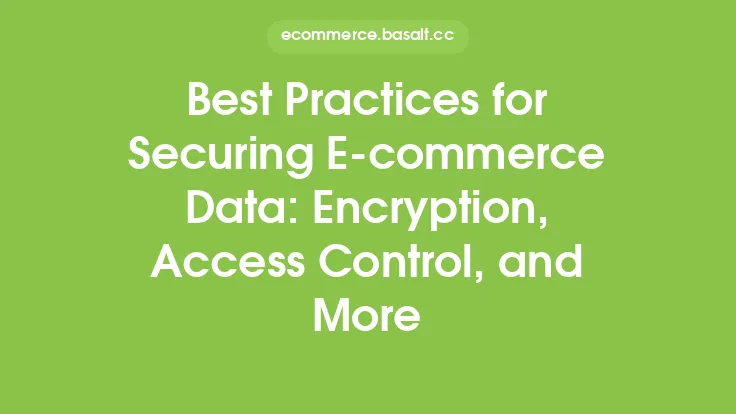Handling backorders and stockouts is a critical aspect of order fulfillment in e-commerce. When a customer places an order, they expect to receive their product in a timely manner. However, there are times when a product is not available due to high demand, supply chain issues, or other factors. This is where backorders and stockouts come into play. In this article, we will discuss the best practices for handling backorders and stockouts, and how to minimize their impact on your e-commerce business.
Understanding Backorders and Stockouts
Backorders and stockouts are two related but distinct concepts. A backorder occurs when a customer places an order for a product that is currently out of stock, but the seller expects to receive more inventory soon. In this case, the seller will fulfill the order as soon as the new inventory arrives. On the other hand, a stockout occurs when a product is out of stock and the seller does not have a clear estimate of when it will be restocked. Stockouts can be more challenging to manage than backorders, as they can lead to lost sales and customer dissatisfaction.
Communicating with Customers
Effective communication is key to managing backorders and stockouts. When a customer places an order for a product that is out of stock, it is essential to inform them of the situation and provide an estimated delivery date. This can be done through email, phone, or a notification on the order tracking page. Transparency and honesty are crucial in building trust with customers and reducing the likelihood of negative reviews and complaints. It is also important to provide regular updates on the status of the order and to notify customers as soon as the product is back in stock.
Setting Clear Expectations
Setting clear expectations is vital in managing backorders and stockouts. This includes providing accurate information on product availability, estimated delivery dates, and any potential delays. Sellers should also have a clear policy in place for handling backorders and stockouts, including procedures for notifying customers, providing refunds or substitutions, and offering compensation for delays. By setting clear expectations, sellers can reduce the risk of customer dissatisfaction and build trust with their customers.
Managing Inventory
Managing inventory is critical in preventing backorders and stockouts. Sellers should regularly review their inventory levels and adjust their stock accordingly. This includes monitoring sales trends, seasonality, and supplier lead times to ensure that they have sufficient stock to meet demand. Sellers should also consider implementing a just-in-time (JIT) inventory system, which involves ordering and receiving inventory just in time to meet customer demand. This can help reduce inventory holding costs and minimize the risk of stockouts.
Offering Alternatives
Offering alternatives is a great way to manage backorders and stockouts. When a product is out of stock, sellers can offer customers a substitute product or a similar product from a different brand. This can help reduce the likelihood of lost sales and customer dissatisfaction. Sellers can also offer customers the option to pre-order a product or to be notified when the product is back in stock. By offering alternatives, sellers can provide customers with more options and reduce the impact of backorders and stockouts.
Providing Compensation
Providing compensation is a great way to show customers that you value their business and apologize for any inconvenience caused by backorders or stockouts. This can include offering discounts, free shipping, or a gift card. Sellers can also provide compensation in the form of a refund or a store credit. By providing compensation, sellers can build trust with their customers and reduce the likelihood of negative reviews and complaints.
Analyzing and Improving
Analyzing and improving processes is critical in managing backorders and stockouts. Sellers should regularly review their inventory management processes, supplier lead times, and shipping procedures to identify areas for improvement. This includes monitoring key performance indicators (KPIs) such as inventory turnover, fill rates, and order fulfillment rates. By analyzing and improving processes, sellers can reduce the risk of backorders and stockouts and improve overall customer satisfaction.
Implementing Technology
Implementing technology is a great way to manage backorders and stockouts. Sellers can use inventory management software to track inventory levels, monitor sales trends, and automate ordering processes. They can also use shipping software to streamline shipping procedures and reduce the risk of delays. Additionally, sellers can use customer relationship management (CRM) software to communicate with customers and provide them with updates on their orders. By implementing technology, sellers can improve efficiency, reduce costs, and enhance customer satisfaction.
Conclusion
In conclusion, handling backorders and stockouts is a critical aspect of order fulfillment in e-commerce. By communicating effectively with customers, setting clear expectations, managing inventory, offering alternatives, providing compensation, analyzing and improving processes, and implementing technology, sellers can minimize the impact of backorders and stockouts and improve overall customer satisfaction. Remember, transparency, honesty, and effective communication are key to building trust with customers and reducing the likelihood of negative reviews and complaints. By following these best practices, sellers can provide a seamless order fulfillment experience for their customers and build a loyal customer base.





